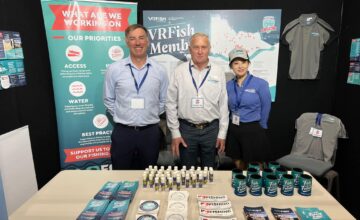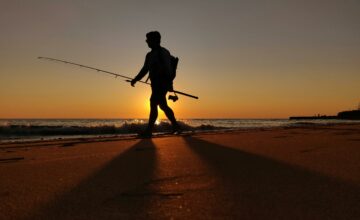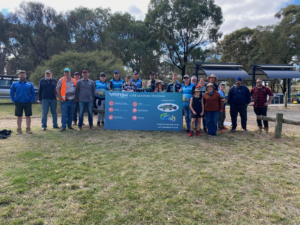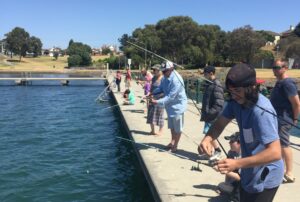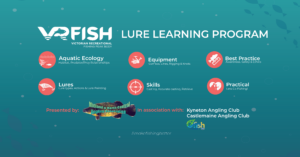October 26, 2018
Quality and vibrant fishing experiences are simply not possible without healthy fish habitat. Thankfully, recreational fishers not only understand the link, they have identified protecting, restoring and enhancing fish habitat as a key priority to ensure the ongoing success of fishing in Victoria and the sustainability of our fisheries.
As part of VRFish’s 8 point plan election policy to make fishing better for everyone, we are calling for the investment of $30 million over 4 years into a habitat fund to support on-ground fish habitat action benefiting our marine, estuarine and freshwater fisheries as well as building capacity of our recreational fishing sector to lead, and participate in, fish habitat activities.
To many it may appear like a lot of money however the work that’s required around Victoria is immense after decades of neglect. Whether you are a trout fisher, native fisher, boater, saltwater fisher, or all of the above there is a range of direct on-ground work that is needed to make fishing better.
To encourage fishers to participate in on-ground habitat works and monitoring, allocating at least $4 million over four years to a Fish Habitat Community Grants Program would allow fishers and their project partners to apply for grants to improve fish habitat in their local areas. This may include improving the riparian vegetation through tree planting and fence installation, installing in-stream habitat such as tree logs or boulders or removing barriers to fish passages or habitat monitoring. These projects would allow fishers to take ownership over their local area while improving the habitat at their favourite fishing spot.
In our freshwater fisheries, we already know of many priority stretches of rivers and streams that need urgent fish habitat to build resilience and quality of our wild trout fishery, support the recovery of native species such as blackfish and Macquarie perch and would benefit from a roll out a statewide felled timber program to install large woody structures back into our rivers. We see this work complementing work already done to date by Catchment Management Authorities (CMAs) and fishers.
Water should be considered as habitat. Regrettably there are many barriers that prevent our fish migration for spawning, finding food or refuge. Murray cod, for example, often migrate upstream to breed and can travel up to 120km before returning downstream to the area they previously occupied. To ensure fish are able to migrate during spawning season, an indicative project could be to fund a fishway at Koondarook which has been identified in the Native Fish Recovery Plan for the Gunbower and lower Loddon at a cost of $4.5 million. A further $2 million could be put towards other priority barrier removals or fishways would assist in improving fish migration.
Another project which will positively impact fish populations is funding to retrofit irrigation and delivery pumps with innovative self-cleaning pump screens. Fish screens prevent pump blockages, are made in Victoria, employ Victorians, and stop fish and aquatic fauna (including platypus) from being sucked up by pumps and destroyed. Investing $2 million for 2 irrigation channel screens will assist in preventing the loss of huge numbers of native fish eggs and larvae, including our iconic Murray cod, down irrigation channels.
Our estuarine and coastal waters have also suffered habitat loss and felt the brunt of catchment health and coastal development. Port Phillip Bay once featured vast oyster and mussel reefs. However, after many years of destructive dredging and environmental damage these living shellfish reefs are now ecologically extinct. Our member organisation, the Albert Park Yachting and Angling Club and along with The Nature Conservancy and the Victorian Fisheries Authority, are working together to re-establish Port Phillip Bay’s shellfish reefs. The living reef restoration project aims to improve fish habitat and recreational fishing opportunities in the bay and is currently being scaled up in Stage 3 of the project. A further $6.2 million would allow for a 200,000 square metre extension of living shellfish reef in Port Phillip Bay and continue to improve fish habitat and water quality in the bay.
Our once great Gippsland Lakes fishery has been on the decline over the last 20 years and it’s overdue for a comprehensive management overhaul and a fish recovery plan that includes habitat enhancement. A large-scale fish habitat project is an important component of the long-term solution to enhance the juvenile fish habitat and refuges which are now further upstream in the river systems, restoration of seagrass and works to support improving water quality and residence of riparian vegetation.
Seagrass a crucial fish habitat and is strongly associated with the success some of our key species such as King George whiting and southern calamari. Further work in Westernport and Corner Inlet is needed to restore lost seagrass meadows and target actions to either protect seagrass from turbidity and an overload of nutrients.
Habitat is a key priority for VRFish as identified through a ‘How Can We Make Fishing Better’ survey of 1900 Victorian recreational fishers. We play a lead role in advocating for and participating in projects and forums to secure positive outcomes and on-ground works for habitat protection, restoration and enhancement. For other proposed habitat projects visit, Indicative Habitat Projects and Areas for Investment.



